Healing with Ayahuasca
The cornerstone of ayahuasca healing is shadow work: healing deep-seated emotional and psychological issues by clearing your subconscious mind, the body and the energetic system of negative energies.
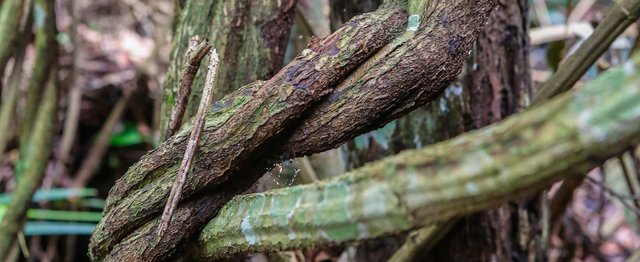
Ayahuasca helps to release negative, fear-filled patterns that have built up over many years through a process of witnessing, integrating and releasing emotional traumas. This facilitates new perspectives on the overall biography of your life and the reasons for the various phases, difficulties and painful experiences. Shadow work is the key to discovering an overall greater sense of purpose, presence and peace in your life.
The initial work is focused on cleansing and purifying your physical body to prepare you for the next stages. One quite reasonable expectation is that you will nearly always go through a strong purge with considerable vomiting and/or diarrhea – hence ayahuasca being referring to as La Purga in many parts of the Amazon.
Some people have unrealistically high expectations of their first ceremonies. To see breathtaking visions at an early stage is rare, but they should not be the primary goal in any case. It is important to understand that an ayahuasca retreat at the Temple is focused on deep healing and not ‘tripping’. While it is not unusual not to experience any visions in your first ceremonies, persistence, patience and determination will often, yet not always, lead to the more visionary states after you have carried out essential physical and emotional healing.
It is important to not set your expectations too high before a ceremony. This is captured by a saying that often emerges from retreats: You will always receive what you need, which isn’t always what you want.
When visions do occur, it is common to see a proliferation of colors, lights, geometric patterns and animals. These are actually somewhat peripheral to the work: the more profound healing is taking place on deeper levels, and insights and understandings about the world and universe around you will typically arise from within, not outside of yourself. That said, it is impossible to outline exactly what will happen on your own personal inner journeys. Everyone is different and no ceremony is ever the same as another. Even the most experienced ayahuasca drinker cannot predict what direction their visions will take, although there often seems to be a sense of a “course” (in the educational sense) or trajectory being followed, when one looks back over a series of ceremonies.
Eventually, incredibly vivid visions may come to you – often revealing profound knowledge about your place in the universe, the plant and animal kingdoms, and perhaps even revealing life in other dimensions and galaxies. After considerable work, the spirits of the plants (the ibo in Shipibo) or sometimes ancient shamans (Meraya) in their spirit-form may reveal themselves to you.
Working with ayahuasca is very complex, and the medicine will typically work with you in ways you cannot anticipate, and will not respond to impatient demands. Sometimes, when you are in the process of cleansing and purifying your emotions, your mood can become low. Like any cleanse, it is common to feel worse during the healing process before feeling better. Another truism: true healing isn’t about ‘feeling better, but better feeling’.
One of the keys to the liberation of our shadow material is the unfamiliar motion of turning into, not away from, our discomfort. Allowing difficult feelings and emotions to surface, accepting them, integrating them and then releasing them is an indispensable part of the healing process.
Traditional Medicine of the Peruvian Amazon
The foundation of our work at the Temple is traditional Amazonian medicine, practiced by genuine and highly skilled indigenous Amazonian shamanic healers. We deeply honor and respect indigenous traditions, their tried and tested healing practices and profound wisdom that has evolved over thousands of years of working with ayahuasca and Amazonian medicinal plants and trees.
As more and more people are called to work with ayahuasca, there is an exponential growth in the availability of ceremonies not only in Peru but throughout the world. Our concern is that the traditions of the Amazon continue to be respected and practiced by people called to serve ayahuasca. Healers of the Amazon need to undergo arduous training over many years in order to effectively administer and manage ayahuasca. Without sufficient training from genuine healers of the Amazon, those holding ayahuasca ceremonies are typically not in a position to deal with the many issues that can arise.
Indigenous peoples across the planet have maintained a deep relationship with the natural world and the knowledge that nature is conscious and intelligent. Indigenous rituals, ceremonies, techniques, tools and systems of working with medicinal plants and the elements of nature have evolved since time immemorial.
There are many different indigenous and mestizo systems here in the Amazon, but the Temple focuses specifically on the Shipibo system of traditional healthcare. We would like to offer a brief overview of healing practices and traditional medicine in the Amazon from the Shipibo perspective, bearing in mind that there are considerable differences and commonalities among healing traditions and terminologies in the Amazon.
An Ayahuasquero
Many Westerners have been misinformed about the different types of Peruvian Amazonian Respecting_Tradition_4healers, but especially ayahuasca healers. The confusion often centers on the difference between an ayahuasquero and a curandero.
An ayahuasquero is someone who has the ability to prepare and cook ayahuasca. Usually, they are not healers. It must be understood that if ayahuasqueros hold ceremonies, then any healing and insights emerge solely from the medicine. Ayahuasqueros normally cannot directly work on guests’ energies or manage the medicine to maximize healing. In fact, an ayahuasquero of integrity who sees any serious issues (such as heavy energy or negative spirit) will refer that guest to a curandero for actual healing.
A word of caution: People in the Amazon will sometimes go to an ayahuasquero for the purge, but not for deeper healing of more serious issues. If an ayahuasquero runs a ceremony without a curandero present, they run the risk of being overwhelmed if they encounter powerful negative energies. This can become a serious problem in ceremony and potentially put guests in danger.
However, some ayahuasqueros are also curanderos.
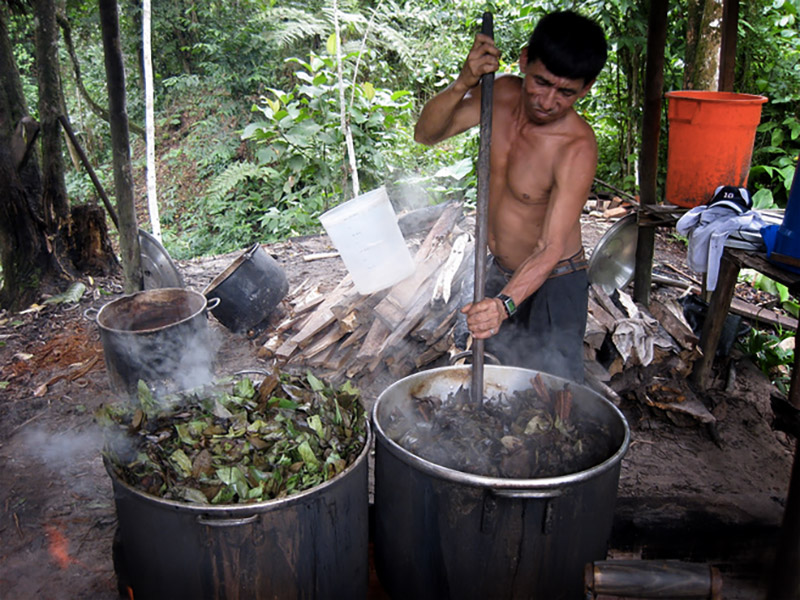
A Curandero/Medico
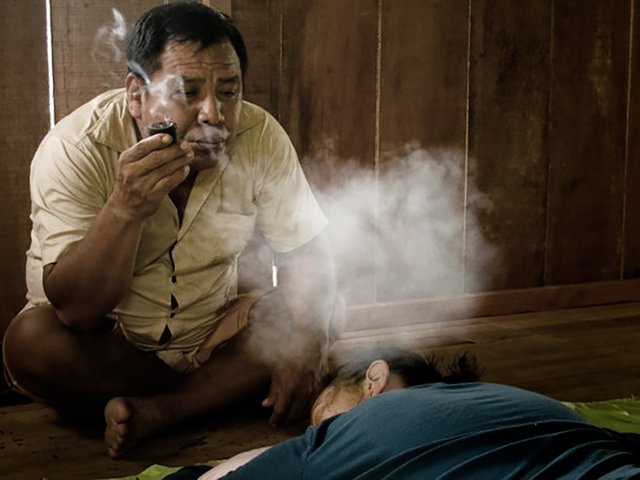
A curandero is a healer. Medico is Spanish for doctor and is a common term used among indigenous and mestizo people in the Peruvian Amazon for a curandero: one who works with plants and plant spirits. Many curanderos will work with ayahuasca, although not all (especially vegetalistas, who are akin to herbalists).
Most curanderos train through a system of (traditional) medical education, essentially given to them by the plant spirits through many plant dietas over many years. This medical education – sometimes referred to as a form of ‘divine science’ – takes numerous years to learn and then to practice effectively. The plant dietas fill the curandero with energy medicine from the different plants and trees they diet; they effectively build a ‘toolbox’ and ‘energetic pharmacy’ that can be used in ceremony.
In Shipibo, a curandero is called an Onanya – one who has knowledge. In order to become a true Onanya, the apprenticeship is around 10 years. True curanderos must be able to face the darkest energies and spirits when working on patients. For this reason, the training is extremely hard and riddled with many obstacles and tests. It is common for only about 20 per cent of apprentices to graduate. The plant spirits will stretch the apprentice curanderos way beyond the limits of the most unbearable discomforts, so they can overcome and experience their deepest fears (up to the illusion of death – the so-called shamanic death, not the ‘ego deaths’ common to the early healing stages).
Other Ways of Working with Ayahuasca
Church Groups
Outside of traditional indigenous and mestizo healing practices, other ways of working with the medicine have evolved, particularly in Brazil, where groups such as Santo Diame and UDV offer a religious approach that syncretizes Christian beliefs with the use of ayahuasca as a sacrament. These churches are, by and large, focused on religious activity and are not working to offer the same level of healing that traditional medicine can. For example, in the US, the Santo Diame church makes it very clear that they do not offer healing and that they are not a healthcare system. They work with ayahuasca as a sacrament, not as a healthcare system or medicine.
Modern / Western Approach
There are also Western shamanic practitioners who serve ayahuasca, hold ceremony and work with sound (including instruments, throat singing, ‘high vibration music’). Provided these ceremonies are held by well-intentioned facilitators operating with total honesty, integrity and sufficient safety protocols, then positive and heart-opening experiences can be facilitated. It is also important that they do not falsely claim to be healers or shamans if they have not been genuinely trained over sufficient duration and depth in the Amazon. However, these types of ceremonies will not reach the depths of healing that a fully trained curandero from the Amazon with many years of dietas will be able to achieve.
Psychotherapeutic Approach
There is now more and more need to integrate Western psychotherapeutic approaches when working with Westerners. Traditional Amazonian healers are able to work on the energetic issues of Western patients but are often not able to deal with the processing and integration that comes during and after the healing work. Psycho-emotional development techniques are necessary especially with more severe cases of emotional trauma. We greatly respect the work of people such as Luis Eduardo Luna and Gabor Mate, despite not offering a purely traditional approach. The Temple is working towards providing the ultimate approach when working with Westerners: a combination of both traditional medicine and advanced psychotherapy techniques.
Ayahuasca Ceremonies Outside South America
One of the greatest challenges of the movement of ayahuasca culture to the West is the transfer of a tradition rooted in shamanic communities to ones with vastly different psychological and cultural values. We passionately believe that education is needed to truly understand, represent and practice traditional Amazonian medicine. As the use of ayahuasca increases, there are both positive and negative consequences.
There are many people holding ceremonies who have no real understanding of how to work with ayahuasca, how to safely hold space and how to support others who are drinking ayahuasca, especially when the experience becomes more challenging. This ultimately threatens the good work of true Amazonian healers (and genuine Western apprentices and curanderos) who train over extensive periods to master their healing skills.
A Western facilitator’s position of power in combination with the medicine can create many challenges. The ceremony leader sits in the center of power. With devoted participants who see the brew as a means of connecting with the Divine, this can lead to participants idealizing the ceremony leader. There is a risk of ‘ayahuasca cults’ forming if the leaders are not psychologically and emotionally balanced.
The Temple is concerned about the number of ceremonies being held by Western facilitators with no training and Respecting_Tradition_3questionable motivations. In the last few years here in the Amazon, there have been a number of extremely unfortunate and unnecessary deaths of people who had ‘taken’ ayahuasca with ill-intentioned and untrained ceremony leaders. They were not curanderos. We do not wish to see this become a growing issue either inside or outside South America (noting that in most countries the use of ayahuasca is currently illegal).
The Temple is deeply committed to developing more awareness among the general public and the academic and medical communities about the efficacy and often profound benefits of ayahuasca healing, when practiced appropriately and respectfully. We feel that it is essential to present ayahuasca healing work with absolute sincerity, professionalism and integrity. At its best, working with ayahuasca is a ‘professional’ system of ‘spirit-assisted’ healthcare.
As Westerners attempt to remember our connection to the natural kingdom, we feel it is essential to take heed, learn from and respect indigenous healing traditions. Sadly, indigenous medical practices and their knowledge systems have been destroyed in many places across our planet. We feel strongly that what has survived should now be protected, legitimized and held sacred by people in the West who recognize the significant importance of these systems.
There should be no “gurus” who work with ayahuasca; only healers who humbly transmit the healing energies of the plants as well as pass on the knowledge to others who wish to walk the path of apprenticeship. To reiterate, here is what a good facilitator should be very clear about with his/her circle:
The exact nature of their experience with the medicine;
Whether or not they have received training with an Amazonian curandero; and
That their role is fundamentally to hold the space and care for the safety and welfare of the participants.
A facilitator typically does not drink ayahuasca when holding the space. However, a curandero (or apprentice) must drink ayahuasca when holding ceremony in order to work with the participants – to cleanse, guide, navigate, manage and protect. We advise much caution if you are considering working with any Westerner who:
Proclaims that they are a ‘shaman’ or curandero yet doesn’t drink ayahuasca with the group,
Carries out much self-promotion (such as through videos and books),
Appears to have developed a community of ‘followers’,
Expounds ‘spiritual truths’,
Carries out a ‘healing performance’,
Claims they are singing ikaros (if they have not done many dietas).
There are some genuine Western curanderos scattered throughout the globe who have been genuinely trained in the Amazon but they are rare and typically do not have the need or desire to self-promote.
Ayahuasca puts people into a vulnerable and particularly susceptible state. Guests can easily be pulled into believing that the facilitator is actually the one carrying out the healing. The interpersonal dynamics and energy between the facilitator (or healer/practitioner) who is conducting an ayahuasca ceremony and the guests can also cause significant harm when not handled appropriately. It is common for there to be unconscious projections between ‘patient’ and ‘therapist’, forms of countertransference. Facilitators may end up consciously or unconsciously superimposing their own agenda on the guest. Guests can also idealize and focus an inordinate amount of attention and energy on the healers/facilitators, losing the original intention of their ceremonies for growth and development.
We hope this information can help anybody looking to work with ayahuasca find a genuine practitioner. Much caution should be taken when choosing with whom to drink ayahuasca. As the medicine expands its reach across the planet, it is essential that its foundation – indigenous traditions of the Amazon – be honored and respected.
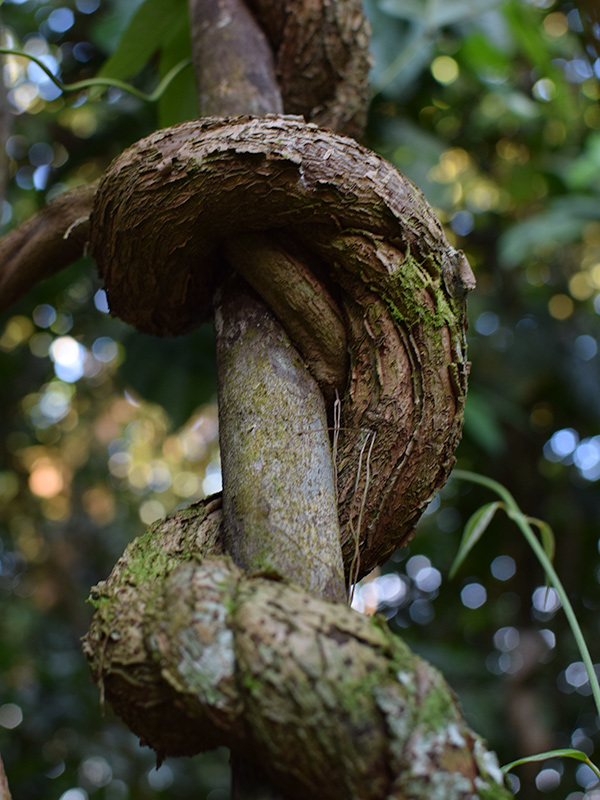
Healing Trauma – Individual and Collective Transformation
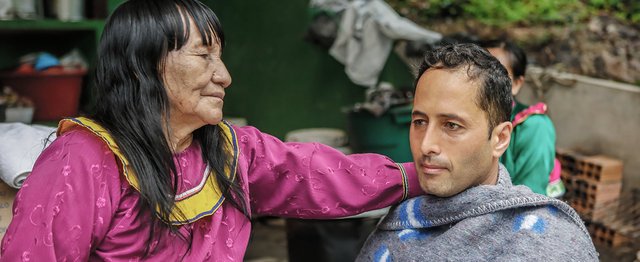
“Throughout recorded and oral history, it has been the task of the shaman, or tribal healer, to help restore balance and health to individuals and communities where it has been disrupted,” writes Peter Levine. “In contrast to Western medicine, which has taken its time in recognizing the debilitating effects of trauma, shamanistic cultures have acknowledged such wounds for a very long time.”
A pioneer in the treatment of trauma, Levine adds: “Shamanistic cultures view illness and trauma as a problem for the entire community, not just the individual … People in these societies seek healing as much for the good of the whole as for themselves.” (Waking the Tiger: Healing Trauma)
Trauma is a fact of life. It has become so commonplace that most people do not even realize its impact or presence. Trauma is felt by all of us at some stage in our lives and does not result only from what is commonly thought to be its cause: shock trauma from abuse or attack. Trauma can be experienced through misfortune or during routine passages of life, such as surgery, medical and dental procedures, anaesthesia, illnesses, and accidents and injuries. Inappropriate or harsh behavior by parents, teachers and peers, as well as betrayal, financially hard times and the pressure of societal and cultural expectations can all cause trauma, not only events such as the loss of a loved one, robbery or witnessing violence. These are just some examples. Fetal distress and birth difficulties can also cause a level of trauma in the system that deeply affects the way we view and live in the world.
Traumatic symptoms are not caused by the “triggering” of the event itself. They stem from the frozen residue of energy that has not been resolved and discharged; this energy remains trapped in the system, where it can wreak havoc on our mind and body. However, we can remove this energy by working with the plants.
The Gift of Trauma Transformed
Held within the symptoms of trauma are the very energies, potentials and resources necessary for their constructive transformation. Western medicine and culture typically block our innate healing process – by using drugs to suppress symptoms, by over-emphasizing adjustment or control, or by denial or invalidation of emotions, feelings and sensations.
The same energies that create the symptoms of trauma, when properly engaged, can transform the trauma and inspire new levels of healing, mastery and wisdom.
Healing_Trauma_2This residual energy persists in the body and is expressed in a wide variety of symptoms: anxiety, depression, sadness, disassociation, fear, panic, and other psychosomatic and behavioral problems. These symptoms are signals from our mind and body that there is undischarged residual energy that needs to be addressed and cleaned. If we don’t deal with this energy and ignore the warning signs, dis-ease will then often manifest as a final warning system.
Trauma resolved is a great gift, returning us to the natural world of ebb and flow, harmony, love and compassion. In order to release the energies caused by trauma, we need the help of caring and experienced healers, and to be surrounded by the protection and support of Nature. We can then trust and honor the process that will bring us to completion and wholeness ‒ and eventually peace. The Temple offers exactly this kind of environment at our healing retreats.
Trauma has the potential to be one of the most significant forces for psychological, social, and spiritual awakening and evolution. How we handle trauma (as individuals, communities and societies) greatly influences the quality of our lives. It will ultimately affect how we will survive as a species.